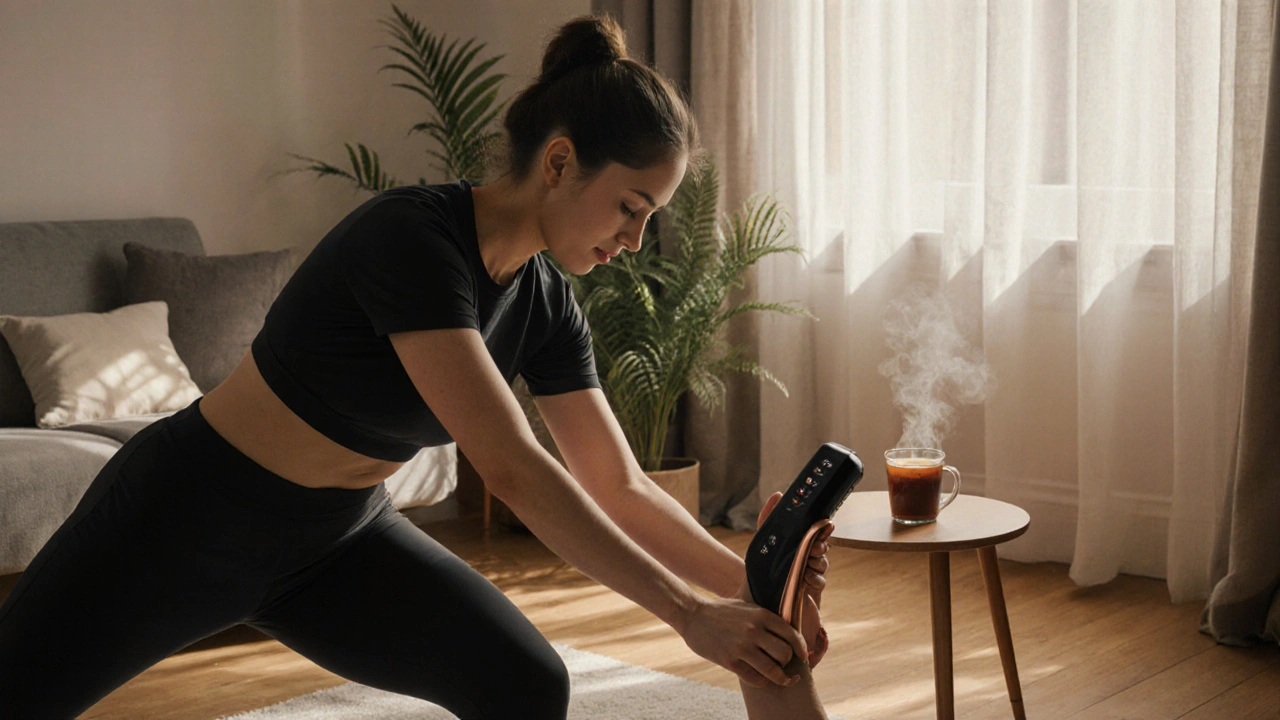Massage Gun Guide: Benefits, Choosing Tips, and Best Use
If you’ve ever felt sore after a workout or a long day at the desk, a massage gun might be the quick fix you need. These handheld devices deliver rapid pulses that mimic a deep‑tissue massage, loosening tight fibers and boosting blood flow. The result? Less pain, faster recovery, and a feeling of loosened tension without booking an appointment.
Most people start with a curiosity about the buzzing sound and wonder if it’s safe. The answer is yes, as long as you follow a few simple rules: avoid bony areas, start on the lowest speed, and keep sessions under two minutes per muscle group. Listening to your body is key—if a spot feels too intense, back off or switch to a softer attachment.
Why a Massage Gun Works
The magic behind a massage gun lies in percussive therapy. Rapid taps stimulate muscle spindles, which signal the nervous system to relax the contracted fibers. This triggers a cascade of increased circulation and a release of built‑in pain‑relief chemicals like endorphins. In practice, you’ll notice a warm, stretchy feeling after a few minutes, similar to what you get from a professional therapist.
Another plus is convenience. Unlike a traditional massage that requires an appointment and travel, a portable gun fits in a gym bag or drawer. You can target sore shoulders after lifting, calm calf tightness after a run, or ease neck strain from hours at a computer—all in a few quick strokes.
Picking the Right Model
When you shop, focus on three main features: amplitude, speed settings, and attachments. Amplitude is how deep the head moves; 10‑12 mm works for most people, while athletes may want 15 mm for deeper work. Speed settings let you control intensity; a range of 20‑30 percussions per second gives flexibility for light or strong pressure.
Attachments matter because different shapes suit different muscles. A round head is great for large groups like thighs, a bullet tip targets trigger points, and a flat head works well on broader areas like the back. Look for a model that includes at least three heads so you can switch easily.
Battery life is another practical point. A good gun should last at least 4 hours on a single charge if you use it regularly. Some brands offer quick‑charge options—great if you forget to plug it in after a session.
Price ranges widely. Budget models under $100 can handle basic recovery, but they may have fewer speed choices and weaker motors. Mid‑range options ($150‑$250) often strike a balance of power, noise level, and durability. If you train professionally, investing $300+ in a high‑end unit could pay off with longer lifespan and smoother operation.
Before you buy, read user reviews for real‑world feedback on durability and noise. A quieter gun makes it easier to use at home or in an office without disturbing others.
Once you have your gun, start slow. Warm up the muscle with light strokes, then increase depth if needed. Keep the head moving—don’t hold it in one spot for more than a minute. Finish with a gentle pass to calm the tissue and seal the benefits.
Maintenance is simple: wipe the head after each use, keep the battery charged, and store the gun in a dry place. Some models let you replace the battery, which can extend the gun’s life dramatically.
In the end, a massage gun is a practical tool for anyone who wants to reduce muscle soreness, improve flexibility, or just feel less tense. By choosing the right features, using it responsibly, and caring for it properly, you’ll get the most out of every buzz. Give it a try and feel the difference in your next workout or workday.
Percussion Massage Self‑Care Guide: Master the Technique
Discover how percussion massage works, pick the right device, and follow a simple routine to boost recovery, relieve stress, and elevate daily self‑care.
- Sep, 29 2025
- 0 Comments
